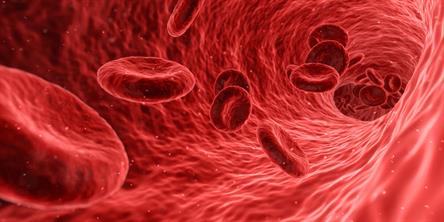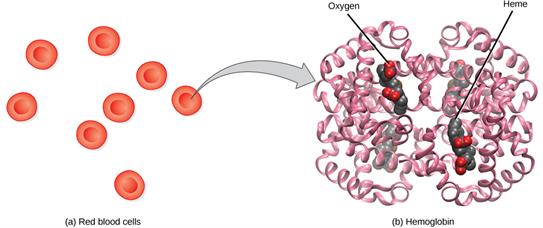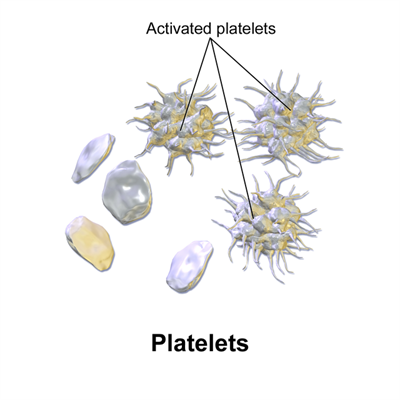PDF chapter test TRY NOW
In the previous theory, we saw the components of blood. In this theory, we shall see the blood cells or the formed elements of the blood.
Red blood corpuscles (Erythrocytes):
RBCs are the most abundant cells present in the human body. A healthy adult has about 5 to 5.5 \ million RBCs/ mm^3 \ of \ blood. RBCs are formed in the bone marrow of bones. The RBCs contain the respiratory pigment haemoglobin, which imparts red colour to the blood.

Red blood cells
The matured mammalian RBCs are enucleated or do not have a nucleus or cell organelles. They are biconcave and disc-shaped. The life span of RBCs is about 120 days. Haemoglobin present in the RBCs transports oxygen from lungs to tissues.
Haemoglobin is a protein made up of a proteins called globin and heme, which is a non-protein group. Heme is an iron-porphyrin complex. A mammalian haemoglobin molecule is a complex made of 4 heme molecules joined with 4 globin molecules.

Structure of haemoglobin carrying oxygen O_2
Important!
Why does mammalian RBC lack cell organelles and a nucleus?
Mammalian RBCs lack a nucleus, and the cells are biconcave in shape. The biconcave shape is advantageous in the exchange of gases. In addition, the biconcave disc shape has increased surface area for oxygen binding.
The absence of mitochondria allows the RBCs to transport all the oxygen to tissues. The loss of the endoplasmic reticulum allows more flexibility for RBC to move through the narrow capillaries.
Blood platelets or Thrombocytes:
Platelets are small, colourless cell fragments that do not contain a nucleus. They are round or oval, biconvex disc-shaped cells. There are nearly 2,50,000 - 4,00,000 platelets/mm^3 of blood. The life span of platelets is 8 - 10 days.
Platelets play a vital role in blood clotting. They form a clot at the site of injury, which prevents blood loss.

Blood platelets
Important!
A decrease in the number of red blood corpuscles (RBCs) or erythrocytes is known as anaemia. A decrease in the number of thrombocytes or blood platelets is known as thrombocytopenia.
Reference:
https://pixabay.com/illustrations/search/white%0blood%20cells/
https://www.shutterstock.com/image-illustration/types-white-blood-cells-infographics-leukocytes-387954859
